Immersive learning and training programs can have a huge impact on user engagement, retention, and real-world results. Thanks to Virtual Reality (VR), Augmented Reality (AR) and Mixed Reality (MR), enterprises and organizations across all sectors, from medicine and aviation to sports and beyond are transforming the way they share knowledge and grow. The advantages are limitless, and can offer especially great efficiencies for distributed, multi-location teams.
Studies show that virtual learners complete training four times faster than those studying with traditional methods, and that they are four times more focused than e- learners. Immersive programs can also make training more inclusive and reduce the risks and costs associated with on-site activities.
In this article we’ll explore a variety of immersive learning applications, things to consider when implementing virtual training infrastructures and how to get the most out of them.
Key Takeaways
- AR, VR, and VR Simulation help simplify complex subjects and enable efficient global training deployment. This helps companies stay competitive and standardize their knowledge management processes.
- Immersive learning improves employee retention, performance, and knowledge absorption while reducing training time and costs.
- Where one-size-fits-all traditional training does not address individual needs or the learning paces of all employees, immersive learning technologies are customizable. They can adapt to the learner’s pace, offer multiple scenarios or levels of difficulty, and provide personalized feedback.
- Obtaining granular data about trainee performance from traditional training methods is often not possible. AR and VR platforms can collect data on every interaction, providing insights into areas for improvement and content effectiveness.
- Immersive learning programs can significantly reduce costs and offer ROI in other ways such as behavioral change, improved engagement, and reduced time to competence.
Let’s chat
Not sure where to start? Book a free strategy call with us to get started! No strings attached.

What is Immersive Learning?
Immersive learning is an educational method that places students directly in an interactive environment, leveraging technologies such as virtual reality, augmented reality and mixed reality to simulate real-world scenarios or create hands-on experiences. Unlike traditional passive learning, where students are primarily listeners or note-takers in a classroom-based environment, immersive learning emphasizes active participation, multi-sensory engagement, and practical application of knowledge.
What’s the Difference Between Immersive Learning and Experiential Learning?
Immersive learning and experiential learning are both hands-on, interactive educational approaches, but they have some differences.
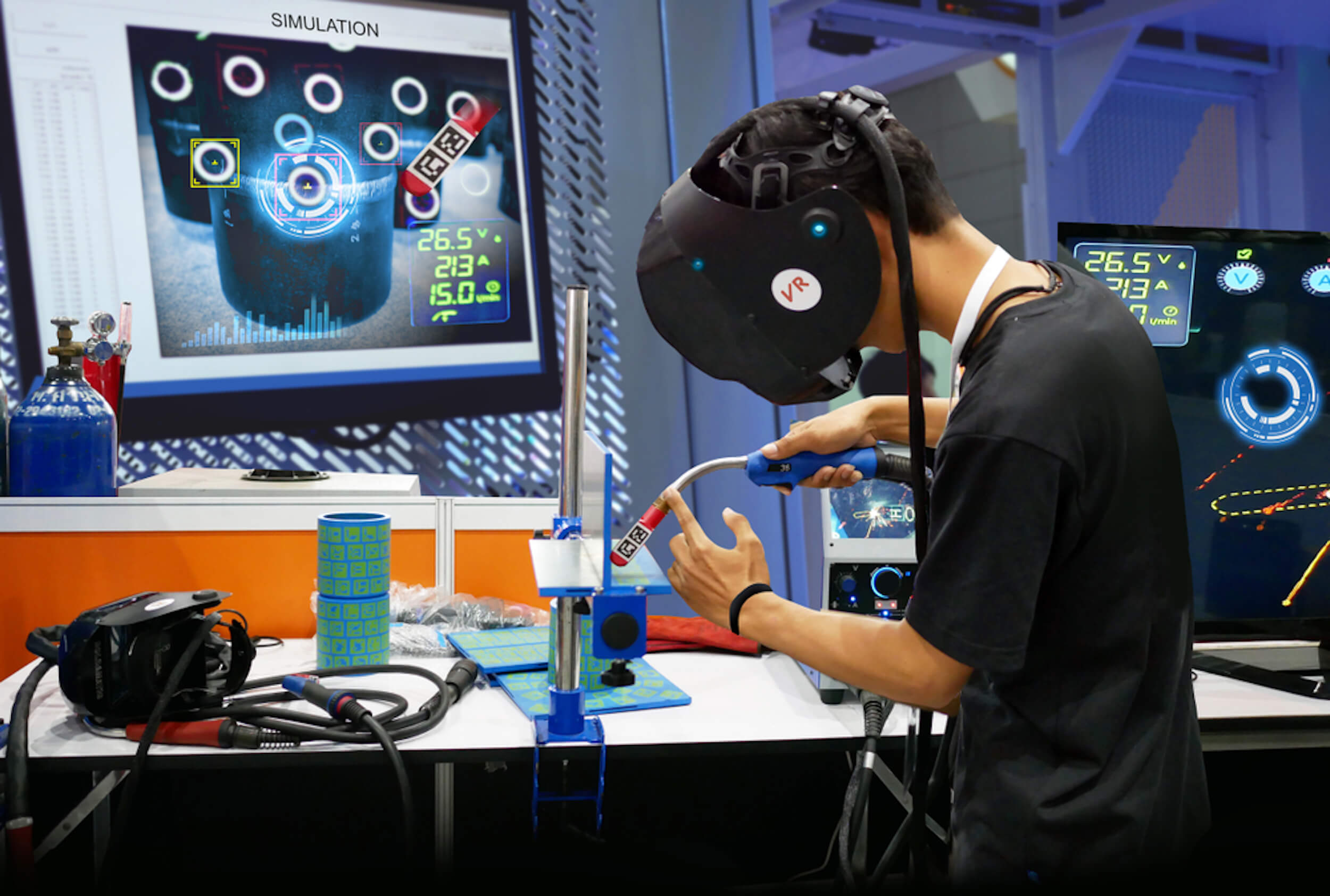
As mentioned, immersive learning often relies on digital technology—such as AR, VR, and simulation training (we’ll dive into the nuances below)—to create a simulated or artificial learning environment. This setting allows for total engagement and learner presence within the experience. It may also explore non-linear solutions, where learner actions reveal multiple possibilities, as opposed to a single right or wrong answer.
The three main types of immersive learning technologies that businesses might leverage include VR, AR, and VR training simulations.
Experiential learning, meanwhile, encompasses the broader concept of learning through experience. This can be virtually assisted; it can also take place in real-world settings without digital technology. Experiential learning involves direct engagement with materials or the environment and can include in-person field trips, hands-on experiments, or community projects.
Keep up to date
Sign up to our newsletter for exclusive updates and content, delivered directly to your inbox.
What are the Benefits of Immersive Training and Learning?
Whether delivering business training in an enterprise or educational content in a school setting, immersive learning can have a big impact on results. In fact, 70% of consumers say that AR can help with skill development, and V-learners (employees using VR for training) in a PwC study reported feeling up to 275% more confident to act on what they had learned—40% higher than the classroom rate. Here are some benefits of using virtual reality, augmented reality and mixed reality in education and training:
- Improved retention. Immersive learning requires learners to make decisions, solve problems, and think critically—and this leads to better retention.
- Emotional connection. By simulating real-life experiences, immersive learning creates emotional engagement, making the learning process more meaningful. Learners can be nearly 4 times more emotionally connected to content accessed a virtual setting than in a physical classroom.
- Contextual learning. Immersive learning provides context to the material being studied. It allows students to understand not just the “what,” but also the “why” and “how” of the subject matter.
- Safe environment. One of the great advantages of immersive training is the ability to practice skills in a safe environment where mistakes do not carry real world consequences. This encourages risk-taking and exploration—essential for learning.
- Caters to different learning styles. Immersive technologies can make training programs more inclusive, accommodate more learning styles and maximize engagement for all learners.
Immersive training can have a substantial impact on ROI. Firstly, it can boost learner engagement, retention and performance, producing greater real-world results. Secondly, the automation of training can also lower the costs of implementing a program over time. As such, organizations can benefit from both lowered cost of investment and increased payoff.
What are Some Examples of Immersive Learning Technology?
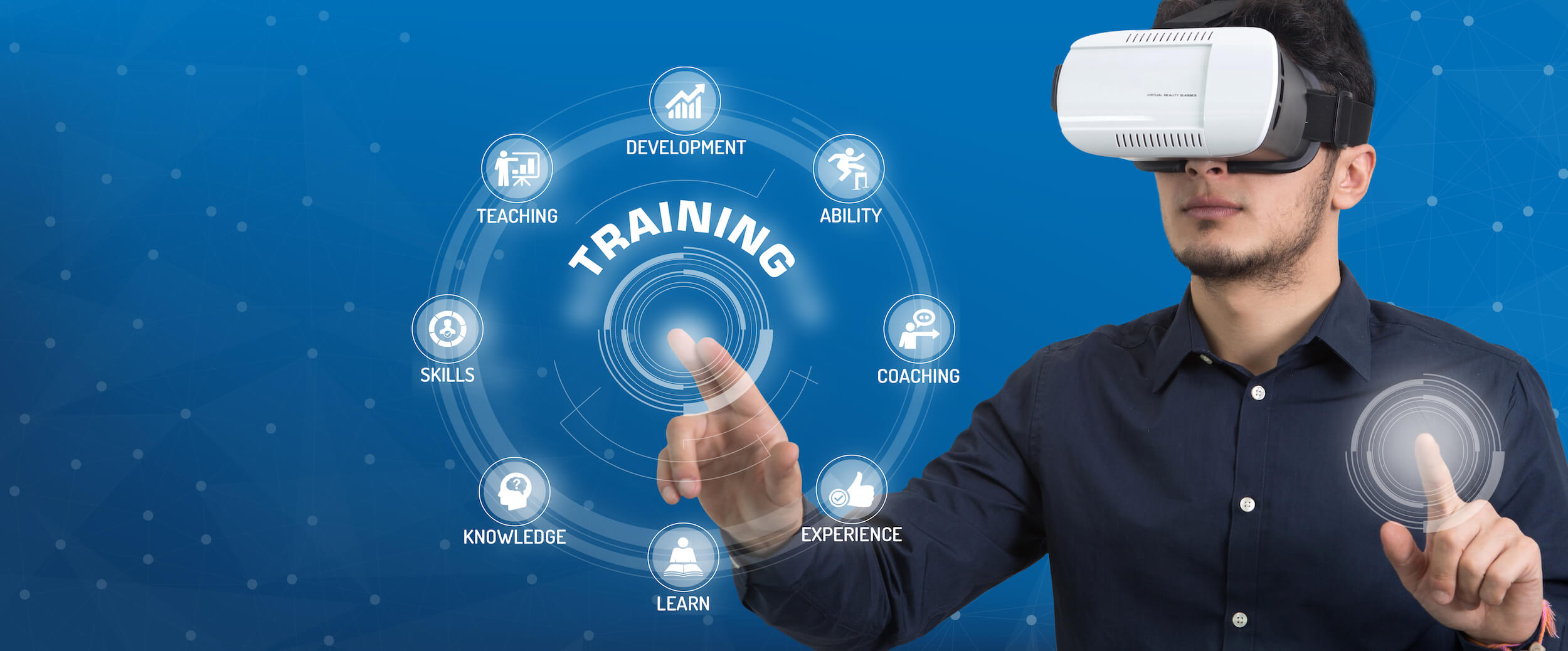
What is Virtual Reality Learning?
Virtual reality is an immersive technology that transports the user to a different environment, typically through a VR headset or other headworn device. This environment might be modeled after real-world settings or exist as a completely imaginary landscape. In education, VR learning is used for immersive storytelling, virtual field trips, and complex skill simulations. It can offer students a deep dive into content that would otherwise be inaccessible due to physical, temporal, or financial constraints.
What is Augmented Reality Learning?
Augmented reality learning integrates digital information into the user’s actual surroundings in real time. Unlike VR, which creates an entirely artificial space, AR overlays new information on top of the existing environment. For learning purposes, this could mean pointing a tablet or smartphone at a machine to see its components labeled, or at a historical site to view historical facts and figures.
What is Virtual Reality Training Simulation?
Simulation training provides a realistic emulation of real-world processes or systems for the purpose of practice and learning. It’s widely used in fields where hands-on experience is crucial, such as aviation, healthcare, and engineering. With simulation training, learners can practice tasks, manage complex situations, and experience the outcomes of different decisions in a controlled, risk-free environment.
For instance, surgical trainees may use a simulation to practice skills and operations in a safe but realistic 3D environment. This type of training is highly effective in building competence and confidence.
Applications of Immersive Training
Immersive training can serve a diverse range of industries, with each leveraging the technology to address unique challenges and educational needs. Let’s dive into how certain sectors in particular might leverage AR and VR training.
Immersive Training for Corporate Learning & Development
Immersive learning is increasingly used in corporate environments for leadership development, team building, sales training, and other development programs. It can augment or replace on-the-job practice, allowing learners to gain experience in safe and controlled environments. It also gives employees the chance to practice skills and decision-making without real-world consequences.
For example, RPR developed a retail scene for customer service training incorporating facial cues and real-world physics. Learners could practice responding to body language signals and handle objects on the shop floor.
VR Medical Training
Healthcare institutions use AR and VR technology for repeatable, immersive surgery simulation, providing invaluable practice opportunities in a risk-free setting. Learners can improve their diagnostic skills through virtual patient interactions and stay up to date with the latest medical advancements.
VR Safety Training
Workers in high-risk industries can benefit from immersive learning programs that simulate hazardous conditions, emergency response scenarios, and technical procedures. These work especially well for potentially dangerous environments such as construction sites and energy plants.
The RPR team developed an immersive training simulation of a fire on an oil rig that could be used for health and safety training in the sector. With visual effects to accurately replicate the emergency, users could learn what to expect and how to respond in a more realistic way.
Virtual Reality in Education
Educational institutions use immersive technologies to bring abstract concepts to life, provide virtual field trips, and enable interactive learning experiences that would otherwise be impossible in a traditional classroom. With VR language learning, students can practice conversations in different settings, while criminal justice students can investigate virtual crime scenes.
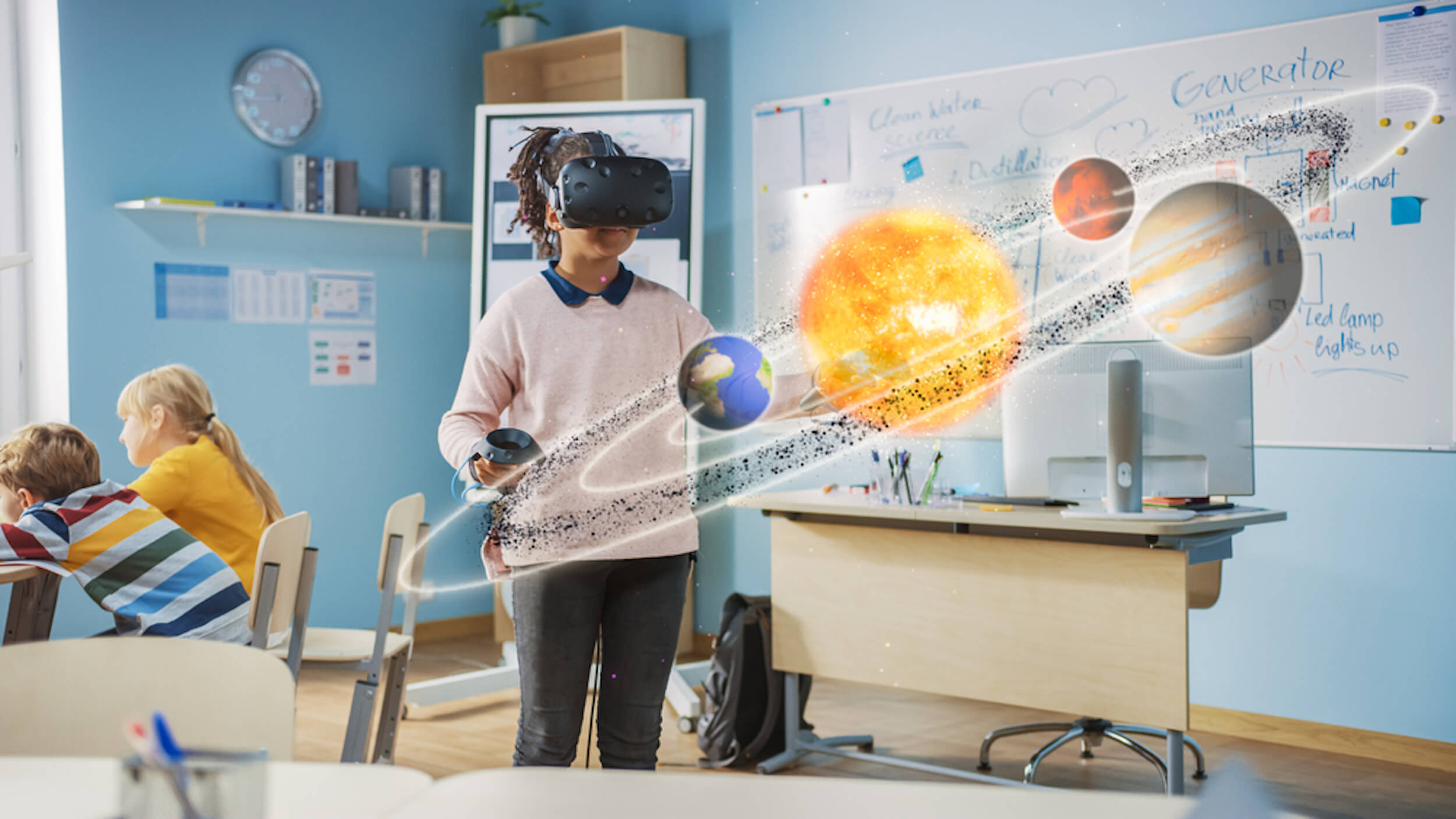
VR Military Training
Military forces use immersive simulations for combat training, tactical planning, and decision-making exercises. This intensely realistic training helps to prepare service members for the physical and psychological demands of the battlefield.
VR Sports Training
Research has shown that VR training can improve athletes’ decision-making abilities, perception and cognitive abilities. VR technology is quickly gaining popularity by coaches as a training tool at all levels, from school and college athletes to professional leagues such as the NFL. Recruiters can use VR technology environments to assess prospective players’ abilities more comprehensively than traditional scouting methods.
In addition, VR sports training is proving highly beneficial in minimizing long-term brain injury caused by impact in boxing, football, soccer, rugby, and other contact sports.
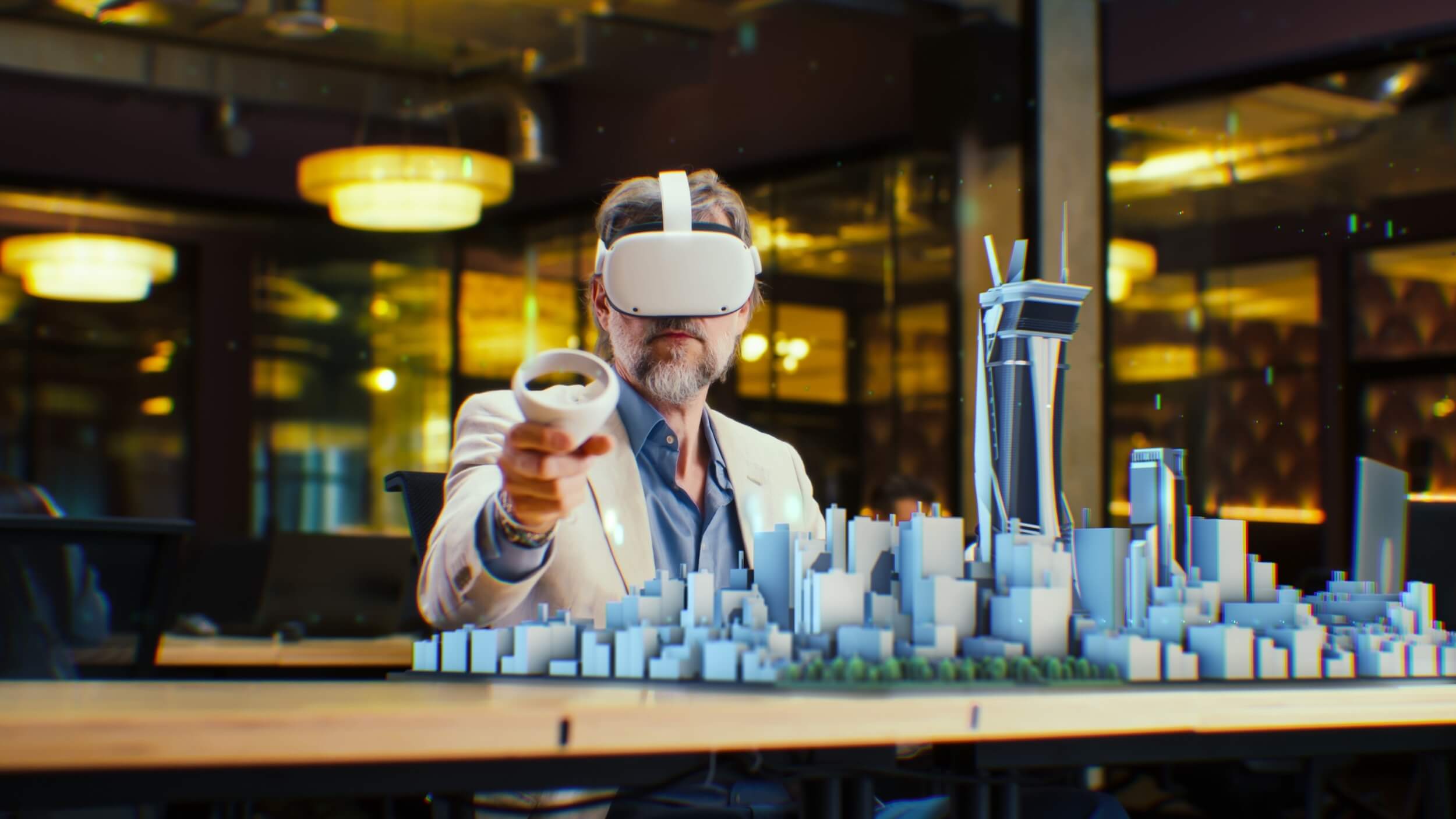
How to Implement Augmented & Virtual Reality Training Programs
Immersive learning can help bridge gaps between remote and hybrid workers, drive behavioral change and create a more connected workplace. The University of Maryland found that compared to traditional methods, VR training resulted in an 8.8% increase in employee performance. Deloitte also reported a 34% rise in productivity due to an increase in employee confidence from VR training.
VR immersive learning is estimated to be more cost-effective at scale compared to traditional classroom or e-learning. Investing in immersive training can activate interest and foster deeper engagement in remote teams. Successful implementation does, however, require a methodical approach and careful planning. Development teams need to select immersive training solutions that align with the learning objectives of their organization.
Building an Immersive Training Environment
Building an immersive learning environment begins with clearly defining what you want learners to achieve. Understanding the desired outcomes will guide the design of the learning experience and material; content should maximize the chosen technology’s capabilities, ensuring seamless integration of text, visual and immersive elements.
Let’s look at a few key factors to consider in the design and creation process:
- Design for interaction. Encourage active participation by designing tasks that require learners to interact with the environment. The more learners can do rather than just see or hear, the higher the likelihood of retention.
- Integrate storytelling. Developing a narrative within the immersive environment can enhance the learning experience by capturing learners’ attention and making concepts relatable. As storytelling coach Hari Patience- Davies says: “including stories in a presentation makes it more memorable, and using a story to help you remember something is a powerful technique.”
- Provide guidance and support. Within the immersive environment, include support mechanisms like tutorials, hints, or an accompanying facilitator to help guide learners and clarify complex information.
- Ensure accessibility. Make the immersive learning environment inclusive for all learners, including those with disabilities. This may involve adding features like voice control and subtitles.
- Incorporate feedback. Real-time feedback is crucial in immersive environments, as it directs learners, reinforces correct behaviors, and helps them understand the consequences of their actions.
- Foster collaboration. When relevant, include collaborative elements that allow learners to work together. This can enhance learning outcomes and mirror real-world teamwork and communication.

Choosing the Right Immersive Technology
Since all other components of the immersive environment hinge on this choice, it’s important to look for content-driven technology from the start. When selecting the best technology for your program, it’s key to:
- Analyze your audience. Consider the characteristics of your learners, including their age, tech-savviness, learning styles, and any special accommodations they might need. This will help you choose a technology that is user-friendly and accessible.
- Assess content suitability. Examine how well your content can be adapted to different immersive technologies. Some subjects may benefit more from one type of technology over another (e.g., VR might be better for spatial understanding, while AR could enhance on-the-job training).
- Evaluate technical requirements. Assess the technical requirements for each technology, including hardware and software needs, maintenance, and potential upgrades. Check that your infrastructure can support it—both on the side of the provider and the learners.
- Consider scalability. Think about how easily you can scale the chosen technology to accommodate the number of users in your program.
- Consider integration with existing systems. Determine how well the new technology will integrate with any current learning management systems (LMS) or other educational technologies you use.

Budget Considerations when Implementing Immersive Training
When calculating the budget for an immersive learning program, there are several cost factors to keep in mind. These include:
- Hardware expenses. Some solutions require specific hardware, such as VR headsets, AR glasses, or mobile devices. Depending on the scale of your program, this could mean purchasing multiple units.
- Software costs. You may need to purchase or subscribe to specialized software platforms that enable the creation and management of immersive content. Additionally, there might be licensing fees for proprietary technologies or content management systems.
- Content development. Creating high-quality immersive content can be costly. Remember to consider expenses for instructional design, graphic design, programming, audio production, and potentially hiring subject matter experts. It’s worth noting though, this cost is inevitable when developing any training materials and is not unique to immersive deployments.
- Infrastructure upgrades. Your current infrastructure may need upgrading to support new technologies, including high-speed internet access, adequate bandwidth, and compatible hardware.
- Maintenance and updates. Ongoing hardware and software maintenance—as well as regular updates to the immersive content—may require long-term budgetary considerations.
- Training and support. You must factor the costs of training educators and support staff into the budget.
- Scaling costs. As your program grows, scaling up the technology to serve more learners may require additional investment.
- Replacement and repairs. Account for the cost of repairing or replacing damaged of obsolete hardware over time.
- Evaluation and analytics. Investment in tools and systems to track and evaluate the effectiveness of the immersive learning experience.
- Accessibility. Making sure that your content is accessible to all learners—including those with disabilities—may involve additional investments in specialized technology or design features.
- Security. Protecting sensitive learner data may require enhanced security measures and systems, if these are not already integrated at an organisation.
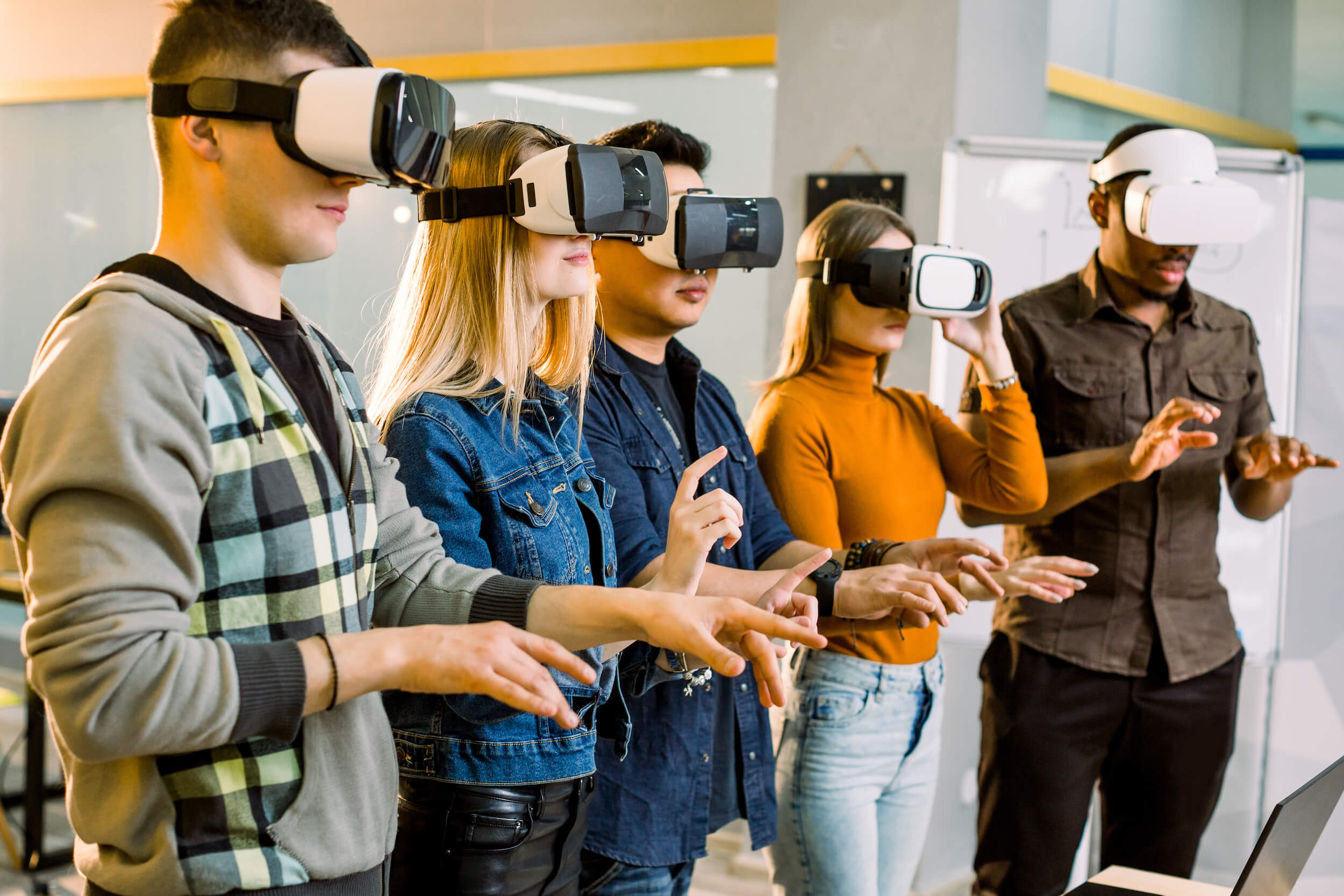
How Do You Measure the Impact of Immersive Training and Education?
Measuring the ROI of immersive learning programs involves evaluating both the tangible and intangible benefits against the costs.
KPIs to Quantify ROI on Immersive Programs
- Pre- and post-assessment performance. Compare learners’ performance metrics before and after participating in the immersive learning program. Improved scores can indicate the program’s effectiveness. You could also cross-compare to similar training delivered via classroom, on-site or e-learning courses.
- Skill retention. Assess long-term retention of skills or knowledge through follow-up tests or evaluations after a certain period has elapsed.
- Behavioral change. Observe and measure changes in learner behavior or performance on the job. This can involve workplace assessments, peer reviews, and self-reporting.
- User engagement metrics. Track engagement metrics within the immersive learning environment like session times, completion rates, and user interactions.
- Feedback and satisfaction surveys. Collect qualitative data to understand learner satisfaction and the perceived value of the program.
- Cost-benefit analysis. Compare the costs of developing and running the immersive program against historical data for traditional training costs. Savings can come from reduced travel, less time spent in training, or not having to use physical resources.
- Time to competency. Measure how quickly learners reach competency with the immersive program compared to traditional methods. A faster time to competency often translates to cost savings and productivity gains.
- Reduction in mistakes or accidents. For certain fields, a reduction in errors, accidents, or safety incidents after training can be directly correlated with financial savings.
- Impact on retention rate. A 2023 study revealed that 86% of hiring managers believe employee training is critical for retention. In addition, 76% of employees are more likely to stick with an employer that offers continuous training. If immersive learning creates higher employee satisfaction and retention, calculate the cost savings from reduced turnover.
- Scalability and reusability. Evaluate the potential to reuse the program for multiple cohorts or the ease of updating it for future use. This will impact the long-term value of the investment.
- Productivity measures. Assess any changes in productivity that can be reasonably attributed to the training. This could manifest as a change in output, efficiency, or quality of work.
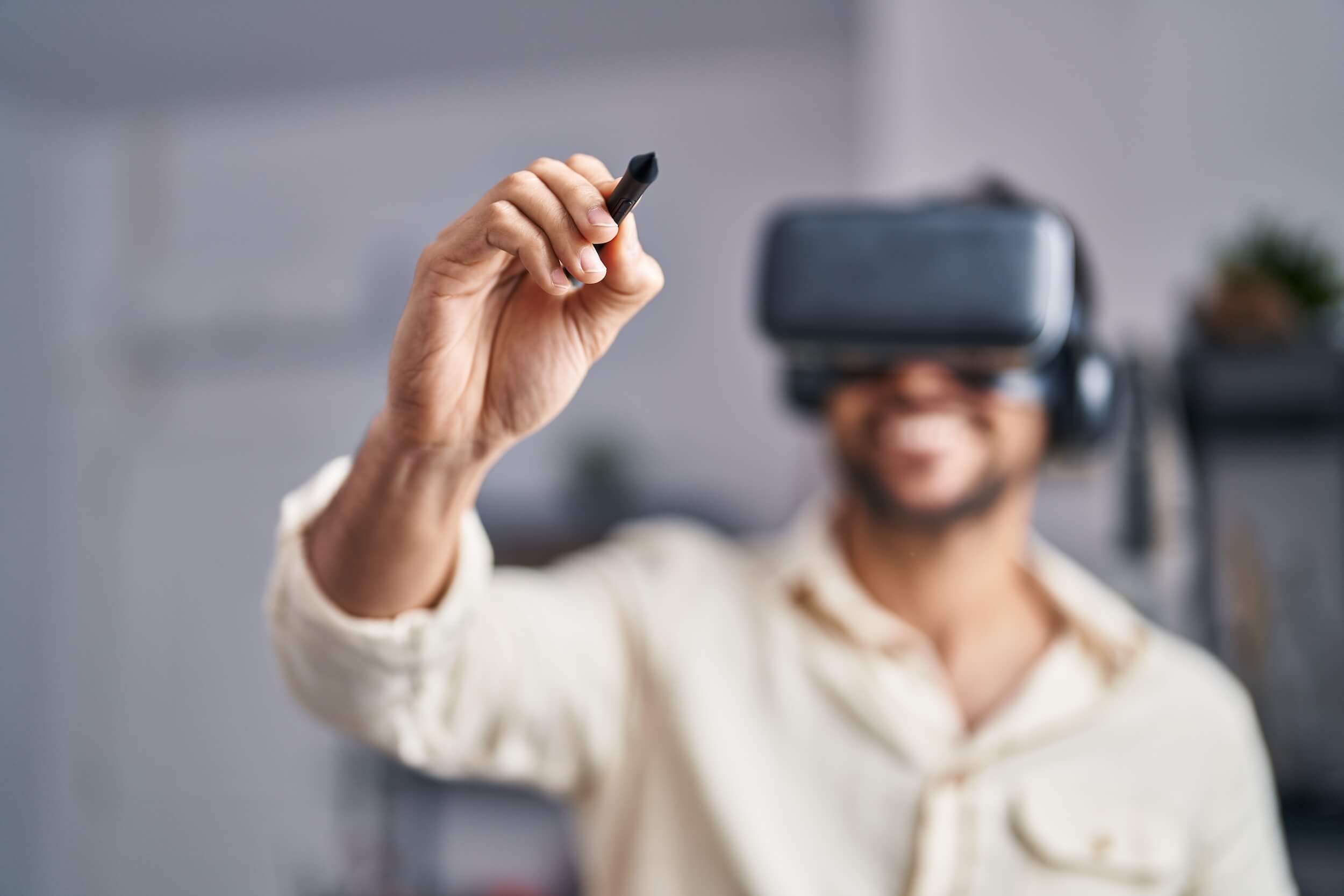
Immersive Learning and Training: Your Competitive Edge
Immersive learning presents a powerful tool to bridge gaps between education and achievement. It can enhance connectivity in the workplace, drive behavioral change, and improve the success of teams. But creating efficient immersive learning environments hinges on combining technical architecture such as VR and AR with compelling and engaging content. Neglecting either side of the equation will limit the return on investment.
Whether you need to level up your training and development department or turn up your marketing, innovation is key to making an impact in and with your business. Rock Paper Reality’s award-winning team of strategists, designers, creators, and engineers specialize in developing and deploying immersive experiences. We’ll find the best technology and content options for your business outcomes, budget, and industry. Ready to progress your business with results-driven immersive tech? Let’s connect.
Frequently Asked Questions About Immersive Learning
What accessibility concerns are key to remember for individuals with disabilities when it comes to immersive learning experiences?
Accessibility is a critical consideration when designing immersive learning experiences. Some key accessibility considerations include adjustments for visual impairments, deaf or hard-of-hearing users, physical disabilities, sensory overload, and epilepsy or other seizure conditions. Designers should confirm compliance with relevant laws and standards, such as the Americans with Disabilities Act (ADA) and the Web Content Accessibility Guidelines (WCAG).
What are the most common challenges organizations face when trying to implement immersive learning programs?
Challenges that can affect the success and effectiveness of immersive learning programs might include:
- Data privacy and security
- Legal and compliance issues
- Aligning programs with certification requirements or industry standards
- Technological infrastructure
- Change management
What steps can organizations take to ensure data privacy and security in immersive learning applications?
Ensuring data privacy and security is essential to protect sensitive information and maintain user trust. Besides ensuring compliance with data protection laws such as GDPR, HIPAA, or the CCPA, organizations should also implement robust encryption measures, employ strong multi-factor authentication, and limit data collection. Where possible, they should also anonymize or pseudonymize data to reduce linkage to identifiable individuals. Implement strict access controls and perform regular security audits and updates.
How can smaller organizations with limited budgets get started with immersive learning initiatives?
Smaller organizations can still take advantage of immersive learning by adopting more strategic and cost-effective approaches. This can include scaling slowly or starting with a pilot program or single-use case. This allows for gradual investment and evaluation before full-scale implementation. Organizations can also start with consumer-grade technology like smartphones, and focus on content with high reusability.
